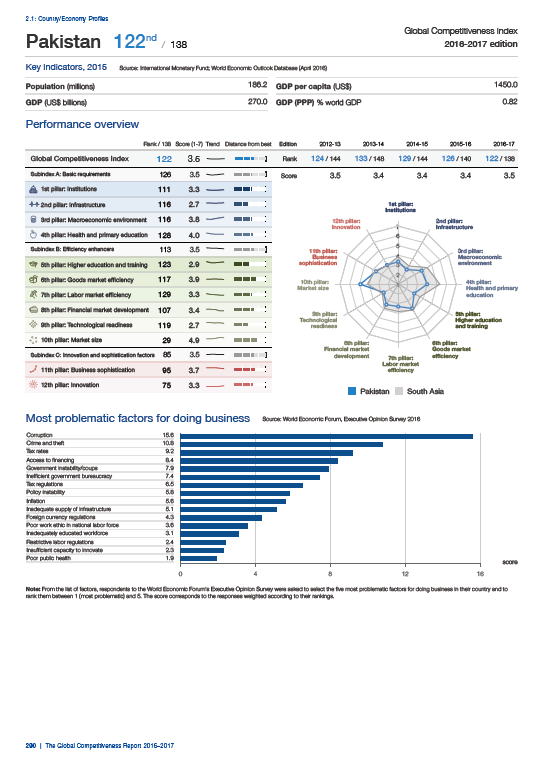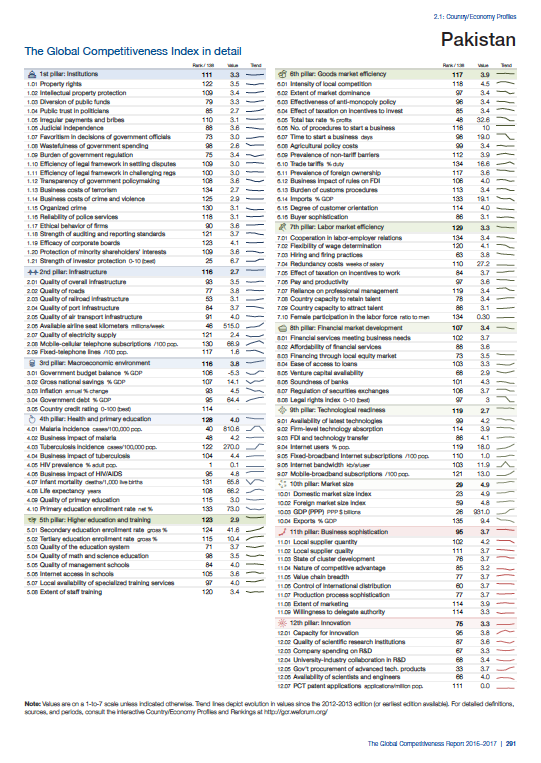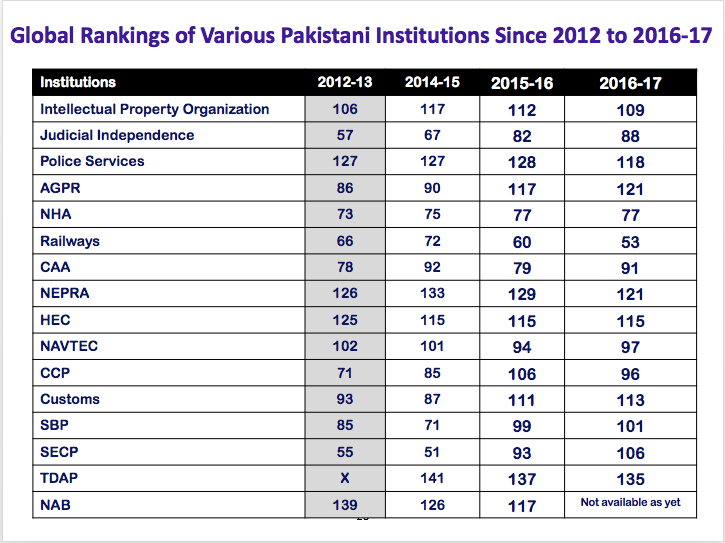AGAHI AWARDS Celebrates Journalism Integrity - First Journalism Awards on Competitiveness Reporting
Pakistan’s most credible journalists recognized for their work at the annual AGAHI Awards in more than 40 categories.
- ARY News Wins the Favorite News Channel of the Year,
- Waseem Badami Favorite Current Affairs Anchor (male),
- Aysha Buksh Favorite Current Affairs Anchor (female) for 2016 in the People’s Choice categories.
- Naseem Zehra of Channel 24 recognized as the Most Credible Anchor of the Year 2016.
- Arshad Sharif and Adeel Raja “AGAHI Awards Investigative Journalists of the Year.”
 |
| Winners of the AGAHI Awards 2016 with the Guests of Honors |
Islamabad, PK – 10 December 2016: The efforts of journalists and media community are recognized every year through the AGAHI Awards. The AGAHI Awards acknowledges journalists’ professional commitment to promote accountability to safeguard public interest. Quality journalism heightens collective consciousness of a society that builds a nation’s identity and purpose. The best of the media industry striving for Ethical Journalism from all across Pakistan were recognized as Journalist of the Year in their respective categories today at the National Library of Pakistan, Islamabad.
The ceremony was hosted by senior journalists, Mubashir Zaidi and Amber Shamsi. This year AGAHI Awards received more than 3500 nominations from all over the country in more than 35 different categories from print, television, radio and online media. The AGAHI Awards received an overwhelming response by the journalist community - where AGAHI Awards reached more than 6 million Pakistanis through social media and almost 1.5 million through SMS for the Peoples’ Choice Awards categories including “Favorite News Channel of the Year” and “Current Affairs Anchors of the Year” in Pakistan. For the first time in the region, the AGAHI Awards also deployed big data and sentiments analysis to measure the people's choice categories.
Puruesh Chaudhary, President AGAHI and the co-founder of the AGAHI Awards while speaking to the participants said, “We can improve our way of thinking if we work together, the media can play an incredible role in helping the decision-makers identify people-centric challenges and opportunities thereby enabling them to opt for the right choices. AGAHI Awards is a step in that direction.”
This is the first year the AGAHI Awards will include the special category ‘Eliminating Hidden Hunger & Malnutrition.’ Pakistan has one of the highest rates of stunting with nearly half of all children in Pakistan malnourished. With the support of the Australian Government and Mishal, the new category aims to encourage journalists to write more on this important issue.
Speaking at the awards ceremony, Australian High Commissioner to Pakistan, Margaret Adamson said the Australian Government was supporting the special category to encourage journalists to raise community awareness of such a critical issue through better informed reporting. “Australia's aid program is supporting a range of programs underway to improve nutrition and food security in Pakistan. I am confident this initiative will help build the capacity of journalists to effectively report on this issue and in turn inform the high priority by policy makers and legislators to implementing cross cutting measures, with supporting funding, to eliminate the urgent issue of malnutrition and hidden hunger in Pakistan,” Ms. Adamson said.
Amir Jahangir, CEO Mishal Pakistan and co-founder, AGAH Awards, in his welcome address said, “For the first time in the history of journalism, the content and the knowledge creator is taking the lead. In this new ecosystem, the guardians of the infrastructure are becoming irrelevant. It’s the journalist, who is taking the center stage now”. He further said, “Journalists are the drivers of public discourse, shaping policies, their stories are becoming a vital link between the citizens and the state”.
AGAHI Awards recognizes “Credibility” as the key currency for public trust for the attention economy, where media becomes the platform to create social values and transparency. AGAHI Awards is the recognition of journalists who have shown personal integrity and professional excellence to make Pakistan a more informed nation.
The AGAHI Awards 2016 Recognized the following “Journalists of the Year” in the following categories:
* Nasim Zehra (Most Credible Anchor of the Year),
* Waseem Badami (Peoples' Choice Awards: Favorite Current Affairs Anchor – Male),
* Ayesha Buksh (Peoples’ Choice Awards: Favorite Current Affairs Anchor – Female),
* ARY News (Peoples’ Choice Awards: Favorite News Channel of the Year),
* Arshad Sharif and Adeel Raja (Investigative Journalists of the Year),
Inaugurated on March 28th, 2012, the AGAHI Awards are Pakistan’s first ever journalism awards recognizing the best journalists across print, television, radio and the internet on more than 40 different journalism thematic beats. AGAHI and Mishal Pakistan in collaboration with leading press clubs across the country, local and international media development bodies, regulatory authorities and the private sector organize these awards.
The AGAHI Awards are the most sought after journalism recognition in Pakistan. The Awards have been the foremost development initiative for media and journalism in the country. The awards have identified some of the most talented and diligent journalists in the industry. The AGAHI Awards winners have now acquired decision-making and leadership position across the media industry for “Shaping the Future of Journalism” in Pakistan.
The AGAHI Awards were co-founded by Mishal Pakistan and AGAHI. The evaluation methodology and selection criteria of the awards have been designed in collaboration with the Center for Internet and Media Ethics (CIME) and on the pillars of Media Development Indicators of UNESCO, with input from the UNESCO headquarters in Paris. The Awards have been organized in collaboration with leading press clubs, local and international media development institutions, regulatory authorities, civil society organizations, private and public sector bodies and other stakeholders.
Leading opinion makers, senior journalists, policy makers, diplomats, academicians, leading professionals from the media industry and representatives from think tanks attended the award ceremony. The AGAHI Awards have been the foremost media development initiative for media and journalism in the country. The awards have identified some of the most talented and diligent journalists in the industry. The AGAHI Awards winners have now acquired decision-making and leadership position across the media industry for “Shaping the Future of Journalism” in Pakistan.
Mishal Pakistan is the country partner Institute of the Center for Global Competitiveness and Benchmarking Networks at the World Economic Forum. Established in 2003, Mishal has been engaged with key stakeholders in Pakistan to improve the state of media and competitiveness through good governance initiatives.
AGAHI is a not for profit working since 2011 to create non-paid communication strategies and strategic foresight. AGAHI encourages and advises individuals and institutions in pursuing and supporting initiatives to improve the state of development in Pakistan. It works on developmental frameworks facilitating information and knowledge sharing platforms on understanding challenges in global perspective. It’s research work mainly focuses on national and international security, ICT, human capital development, and governance.

 With an average remaining gender gap of 33%, the South Asia region is the second-lowest scoring on this year’s Global Gender Gap Index, ahead of the Middle East and North Africa and behind the Sub-Saharan Africa region. Bangladesh and India are the top-ranked countries in the region, having closed just under 70% and 68% of their overall gender gap, respectively, while the lowest-ranked countries are Bhutan and Pakistan, having closed 64% and 56% of their overall gender gap, respectively. No country in the region has fully closed its Educational Attainment gender gap, and only one country, Sri Lanka, has fully closed its Health and Survival gender gap. However, the region is also home to one of the top five climbers over the past decade on the overall Index and on Educational Attainment: Nepal.
With an average remaining gender gap of 33%, the South Asia region is the second-lowest scoring on this year’s Global Gender Gap Index, ahead of the Middle East and North Africa and behind the Sub-Saharan Africa region. Bangladesh and India are the top-ranked countries in the region, having closed just under 70% and 68% of their overall gender gap, respectively, while the lowest-ranked countries are Bhutan and Pakistan, having closed 64% and 56% of their overall gender gap, respectively. No country in the region has fully closed its Educational Attainment gender gap, and only one country, Sri Lanka, has fully closed its Health and Survival gender gap. However, the region is also home to one of the top five climbers over the past decade on the overall Index and on Educational Attainment: Nepal.






